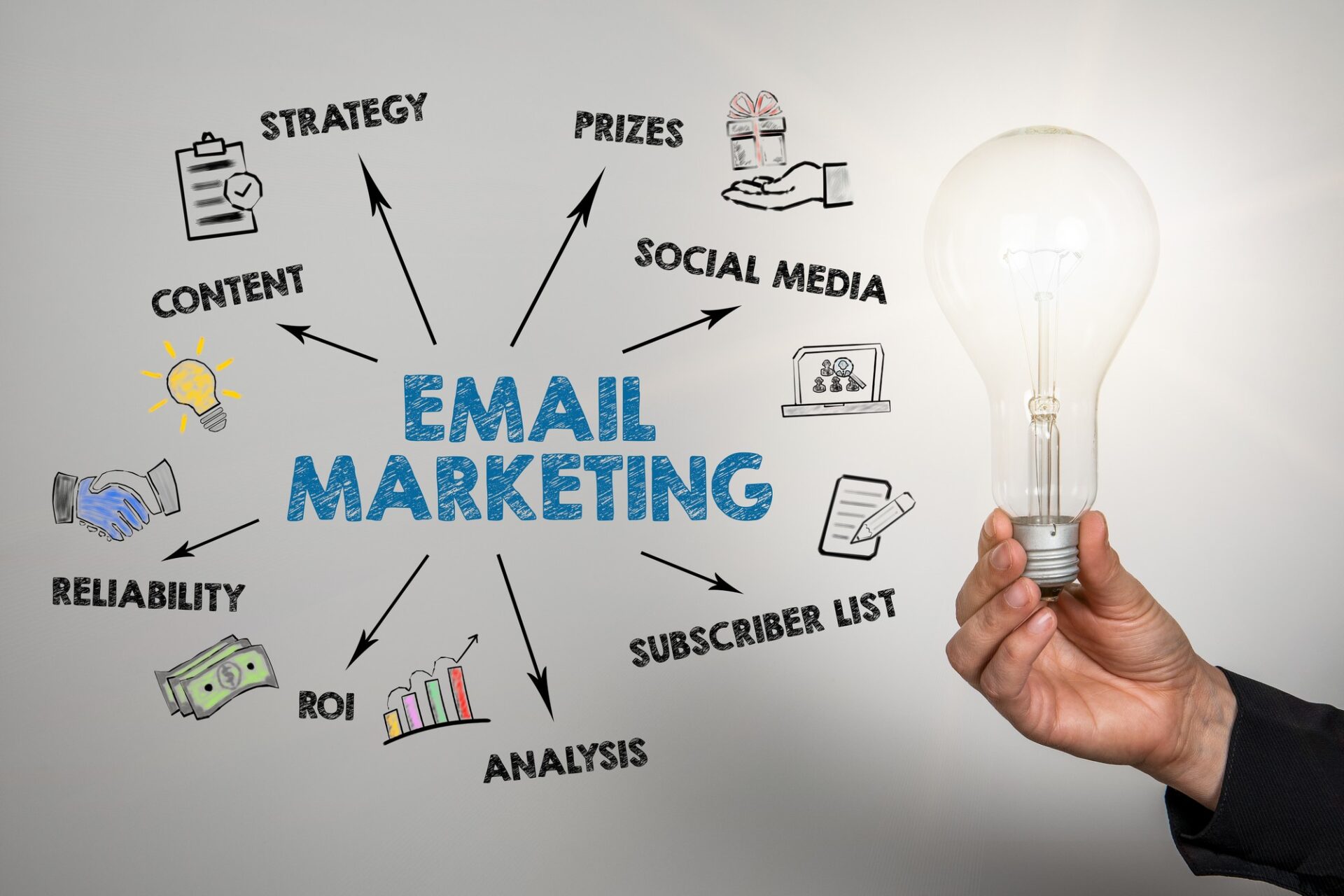Email Marketing can play a vital role within your overall marketing strategy.
At its core, Email Marketing allows you to target different segments of your audience on a 1-to-1 basis, with carefully tailored and personalized messaging.
Until more ephemeral media, such as Social newsfeed where content is only visible for short periods, Emails exist in recipients’ inboxes until they take an action on it; hopefully by reading it, click the link(s) within the email, and proceeding to your chosen website or webpage.
Key differentiators/advantages of Email as a marketing channel are:
• Emails directly communicate with audiences on a 1-2-1 basis
• Emails are permanent until acted upon, and so they can be used to amplify and prolong social media & website content
• Email campaigns can target various audiences, effectively & efficiently, with personalized messaging
• Analytical data on Email performance can be used across all marketing efforts
Email Marketing Strategy
When developing an Email Marketing Strategy, it is important to spend a good amount of time giving careful thought and consideration to 3 crucial areas:
Your Audience(s) – who are they, and what do they want to know?
Your Goals – what do you want from your audience(s)? what would benefit your business?
Your Email Content – what content tells your audience what they want to know, and sets them on a journey towards completing one (or more) of your goals
The keys to success in Email Marketing are similar to those of most other online marketing mediums. It is vital to understand 1) who you are trying to reach and their needs, 2) how you want them to interact with your business, and 3) what content will both meet their needs whilst encouraging your desired interactions.
Also Read: 5S Of Digital Marketing
Your Audience
Firstly, when planning your Email Marketing Campaigns, establish who your recipients should be. Basis differentiating characteristics can be simple demographic information like age, gender, geographic location, and interests.
On a more detailed level, advanced demographic information such as purchasing habits, or an individual’s stage in the buying cycle can significantly impact who companies choose market to.
Businesses even like to view EDDM here to incorporate a more personal touch in their direct mail campaigns, ensuring messages reach the most relevant audience. By targeting specific neighborhoods and tailoring offers based on local consumer behavior, companies can maximize engagement and drive higher conversion rates.
For example:
Online retailers such as eBay often select audiences based on their purchasing habits. i.e. emailing promotions on car care products to individuals who have previously purchased car care products on their site. Insurers often select audiences for their Email Marketing based on their stage in the buying cycle. i.e. focusing on Emailing people whose insurance renewal dates are coming up shortly, rather than people 4 months into a 12 month policy, because the former are likely to be considering purchasing a policy in the near future and the latter are not.
Your goals
Secondly, you need to ask “What action(s) do I want my Email Marketing activity inspire from my audience?” Immediate actions will typically be visiting your website. However, the eventual goal is generating something that is of benefit to your business.
For example:
• Product sales
• Service subscriptions or renewals
• Phonecalls
• Event or webinar attendance
• Contact form submissions
Your email content
Once you understand who your audience are, and what actions you hope to generate as a result of your email marketing, you need to make an informed choice as to the content they may want to receive. Consider what content your audience is likely to take an interest in, and how that content can be leveraged to set your audience on a path towards your website, and eventually towards completing one of your chosen goals.
This will be something you that becomes clearer over time once you have tested a variety of content with your audience. Campaigns are likely to take place over more than 1 email, with a mix of different content and visuals etc.
To read more concepts like this, subscribe to our newsletter
Go to the full page to view and submit the form.


